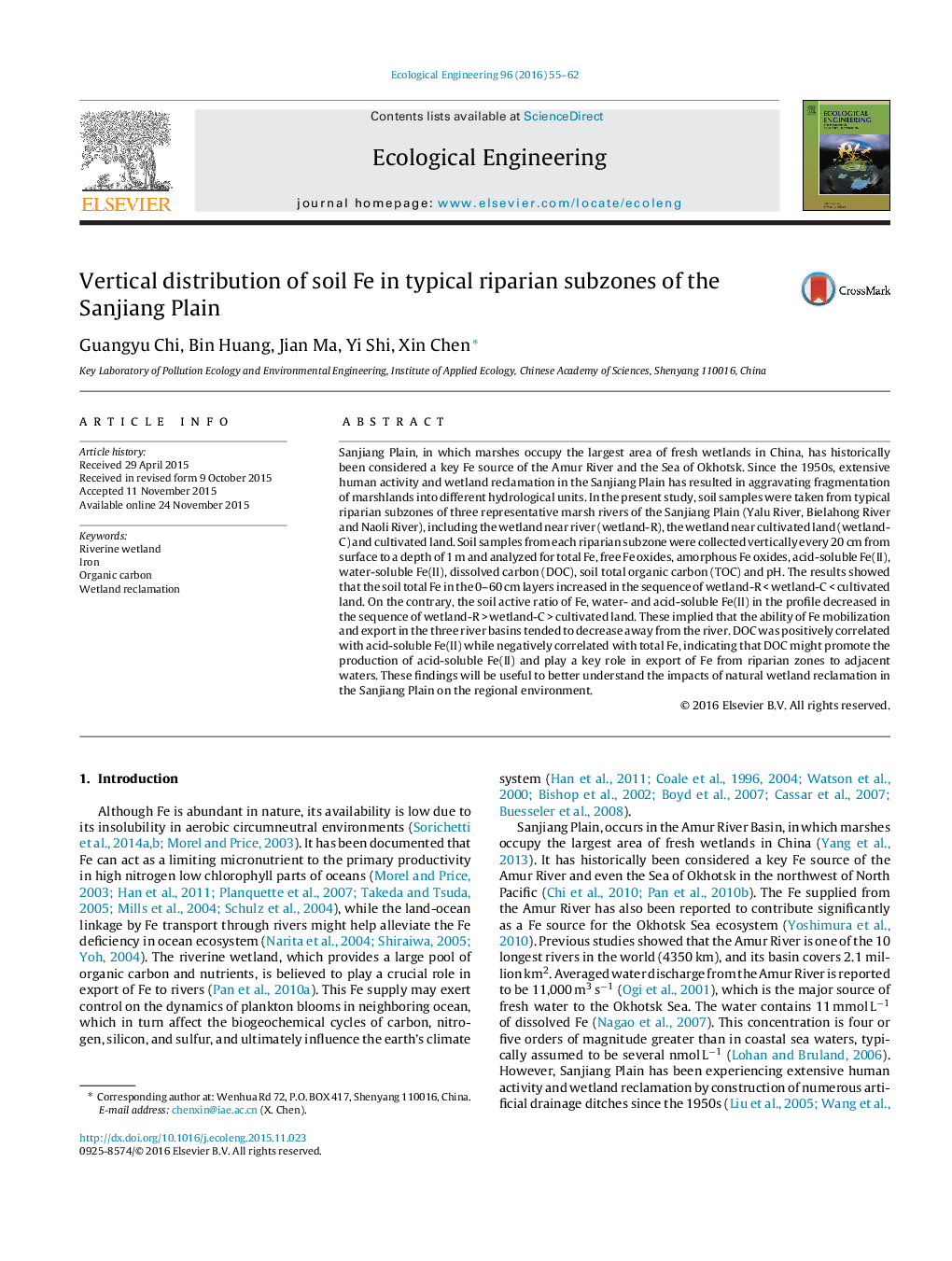| Article ID | Journal | Published Year | Pages | File Type |
|---|---|---|---|---|
| 5744087 | Ecological Engineering | 2016 | 8 Pages |
Sanjiang Plain, in which marshes occupy the largest area of fresh wetlands in China, has historically been considered a key Fe source of the Amur River and the Sea of Okhotsk. Since the 1950s, extensive human activity and wetland reclamation in the Sanjiang Plain has resulted in aggravating fragmentation of marshlands into different hydrological units. In the present study, soil samples were taken from typical riparian subzones of three representative marsh rivers of the Sanjiang Plain (Yalu River, Bielahong River and Naoli River), including the wetland near river (wetland-R), the wetland near cultivated land (wetland-C) and cultivated land. Soil samples from each riparian subzone were collected vertically every 20Â cm from surface to a depth of 1Â m and analyzed for total Fe, free Fe oxides, amorphous Fe oxides, acid-soluble Fe(II), water-soluble Fe(II), dissolved carbon (DOC), soil total organic carbon (TOC) and pH. The results showed that the soil total Fe in the 0-60Â cm layers increased in the sequence of wetland-RÂ <Â wetland-CÂ <Â cultivated land. On the contrary, the soil active ratio of Fe, water- and acid-soluble Fe(II) in the profile decreased in the sequence of wetland-RÂ >Â wetland-CÂ >Â cultivated land. These implied that the ability of Fe mobilization and export in the three river basins tended to decrease away from the river. DOC was positively correlated with acid-soluble Fe(II) while negatively correlated with total Fe, indicating that DOC might promote the production of acid-soluble Fe(II) and play a key role in export of Fe from riparian zones to adjacent waters. These findings will be useful to better understand the impacts of natural wetland reclamation in the Sanjiang Plain on the regional environment.
